 Database
Database
 Mysql Tutorial
Mysql Tutorial
 Mysql 5.7.18 decompressed version installation and startup instance method
Mysql 5.7.18 decompressed version installation and startup instance method
Mysql 5.7.18 decompressed version installation and startup instance method
This article mainly introduces Mysql 5.7.18 decompressed version downloadInstallation and detailed graphic explanation of starting the mysql service. It is very good and has reference value. Friends who need it can For reference
Because there is no .ini file in the distribution package of MySQL Community Server5.7.18, and the data directory will not be initialized, the installation and configuration tutorials for previous versions on the Internet are not applicable
step1: Download from the official websitedev.mysql.com/downloads/mysql/
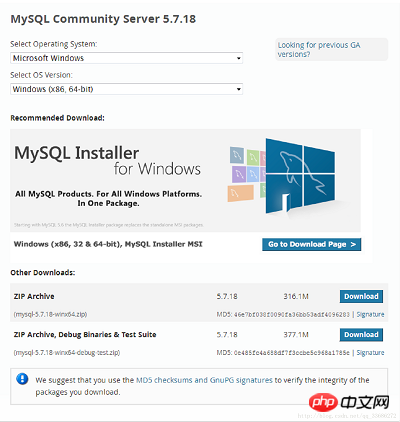
After decompression
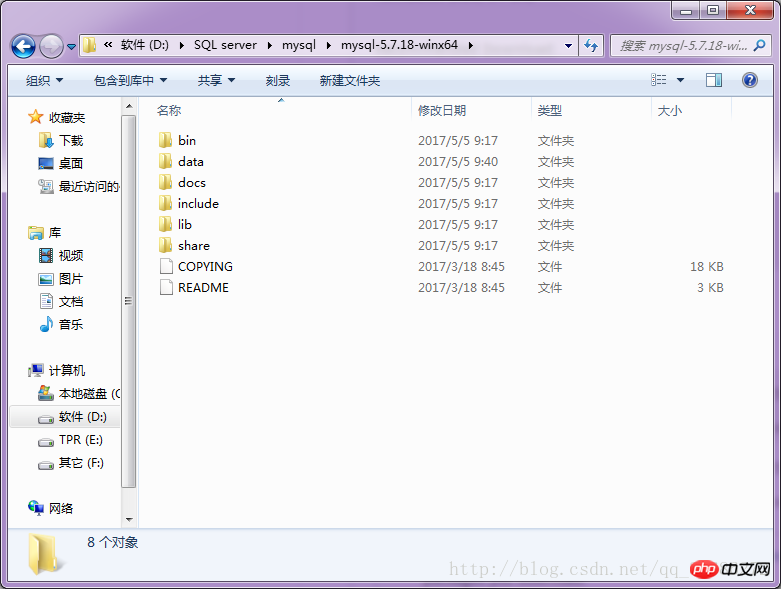
step2: now configure the environment Variables
Create a new system variable named MYSQL_HOME, and the path is the decompressed file path ( Remember to go to bin)
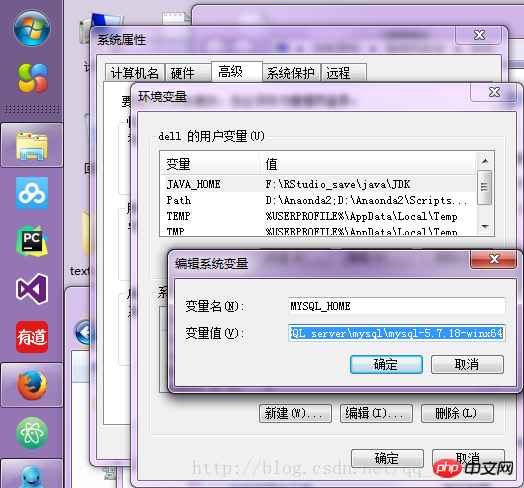
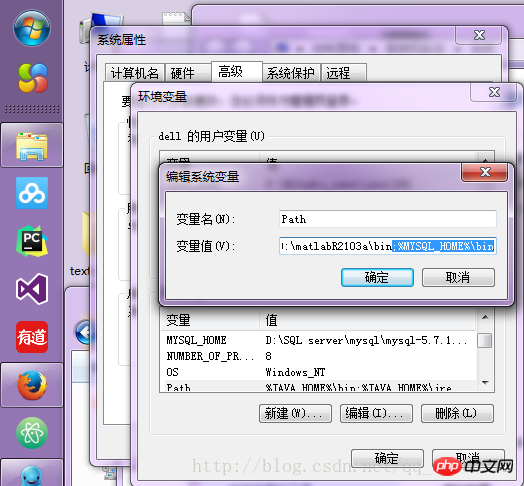
step3 : Go to C:\Windows\System32\cmd.exe, select cmd.exe and run it as administrator

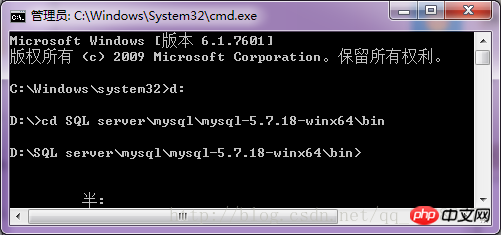 ##Enter mysqld –initialize-insecure to generate the data directory
##Enter mysqld –initialize-insecure to generate the data directory
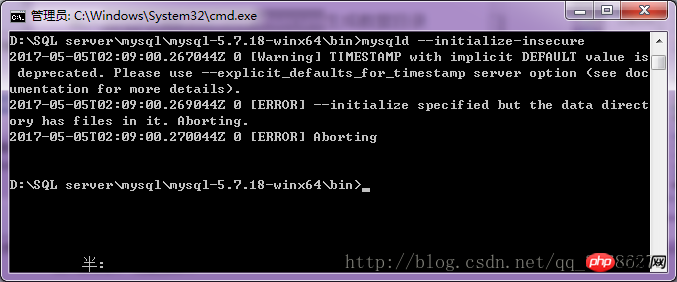 Because there is no .ini file, you can use mysqld –verbose –help to view the configuration (you can do this without executing this command)
Because there is no .ini file, you can use mysqld –verbose –help to view the configuration (you can do this without executing this command)
Enter mysqld -install to load the service (because I installed it again, , so the result is different from the first installation, hhhh)
 Enter net start mysql to start the service
Enter net start mysql to start the service
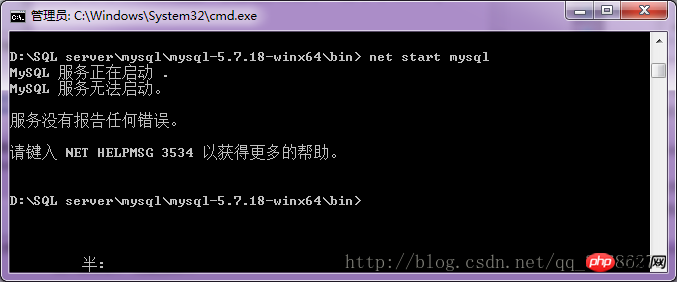 Enter mysql -u root -p to initialize without a password, and press Enter to enter the database directly
Enter mysql -u root -p to initialize without a password, and press Enter to enter the database directly
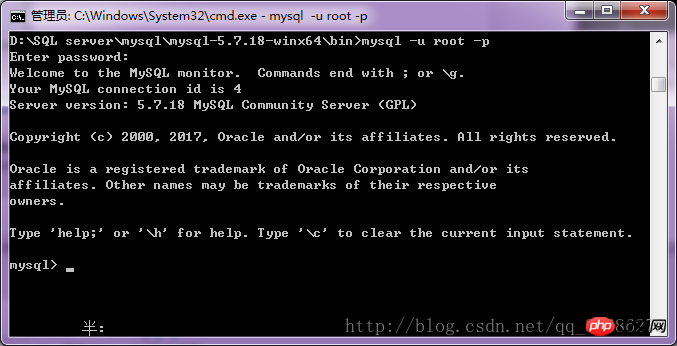 1. There is a Chinese manul, but it is a transfer of version 5.1
1. There is a Chinese manul, but it is a transfer of version 5.1
tool.oschina.net/apidocs/apidoc?api=mysql-5.1-zh
2. The 5.7 version manul on the official website has Tutorial in English, and Chinese can be downloaded on csdn, but I don’t have enough coins to download, it’s okay, I can hold it in English, I need to transfer it
dev.mysql.com/doc/refman/5.7/en/tutorial.html
【Related Recommended】
1.
Free mysql online video tutorialMySQL latest manual tutorial Things about database designThe above is the detailed content of Mysql 5.7.18 decompressed version installation and startup instance method. For more information, please follow other related articles on the PHP Chinese website!

Hot AI Tools

Undresser.AI Undress
AI-powered app for creating realistic nude photos

AI Clothes Remover
Online AI tool for removing clothes from photos.

Undress AI Tool
Undress images for free

Clothoff.io
AI clothes remover

AI Hentai Generator
Generate AI Hentai for free.

Hot Article

Hot Tools

Notepad++7.3.1
Easy-to-use and free code editor

SublimeText3 Chinese version
Chinese version, very easy to use

Zend Studio 13.0.1
Powerful PHP integrated development environment

Dreamweaver CS6
Visual web development tools

SublimeText3 Mac version
God-level code editing software (SublimeText3)

Hot Topics
 PHP's big data structure processing skills
May 08, 2024 am 10:24 AM
PHP's big data structure processing skills
May 08, 2024 am 10:24 AM
Big data structure processing skills: Chunking: Break down the data set and process it in chunks to reduce memory consumption. Generator: Generate data items one by one without loading the entire data set, suitable for unlimited data sets. Streaming: Read files or query results line by line, suitable for large files or remote data. External storage: For very large data sets, store the data in a database or NoSQL.
 How to use MySQL backup and restore in PHP?
Jun 03, 2024 pm 12:19 PM
How to use MySQL backup and restore in PHP?
Jun 03, 2024 pm 12:19 PM
Backing up and restoring a MySQL database in PHP can be achieved by following these steps: Back up the database: Use the mysqldump command to dump the database into a SQL file. Restore database: Use the mysql command to restore the database from SQL files.
 How to optimize MySQL query performance in PHP?
Jun 03, 2024 pm 08:11 PM
How to optimize MySQL query performance in PHP?
Jun 03, 2024 pm 08:11 PM
MySQL query performance can be optimized by building indexes that reduce lookup time from linear complexity to logarithmic complexity. Use PreparedStatements to prevent SQL injection and improve query performance. Limit query results and reduce the amount of data processed by the server. Optimize join queries, including using appropriate join types, creating indexes, and considering using subqueries. Analyze queries to identify bottlenecks; use caching to reduce database load; optimize PHP code to minimize overhead.
 How to insert data into a MySQL table using PHP?
Jun 02, 2024 pm 02:26 PM
How to insert data into a MySQL table using PHP?
Jun 02, 2024 pm 02:26 PM
How to insert data into MySQL table? Connect to the database: Use mysqli to establish a connection to the database. Prepare the SQL query: Write an INSERT statement to specify the columns and values to be inserted. Execute query: Use the query() method to execute the insertion query. If successful, a confirmation message will be output.
 How to create a MySQL table using PHP?
Jun 04, 2024 pm 01:57 PM
How to create a MySQL table using PHP?
Jun 04, 2024 pm 01:57 PM
Creating a MySQL table using PHP requires the following steps: Connect to the database. Create the database if it does not exist. Select a database. Create table. Execute the query. Close the connection.
 How to use MySQL stored procedures in PHP?
Jun 02, 2024 pm 02:13 PM
How to use MySQL stored procedures in PHP?
Jun 02, 2024 pm 02:13 PM
To use MySQL stored procedures in PHP: Use PDO or the MySQLi extension to connect to a MySQL database. Prepare the statement to call the stored procedure. Execute the stored procedure. Process the result set (if the stored procedure returns results). Close the database connection.
 How to fix mysql_native_password not loaded errors on MySQL 8.4
Dec 09, 2024 am 11:42 AM
How to fix mysql_native_password not loaded errors on MySQL 8.4
Dec 09, 2024 am 11:42 AM
One of the major changes introduced in MySQL 8.4 (the latest LTS release as of 2024) is that the "MySQL Native Password" plugin is no longer enabled by default. Further, MySQL 9.0 removes this plugin completely. This change affects PHP and other app
 The difference between oracle database and mysql
May 10, 2024 am 01:54 AM
The difference between oracle database and mysql
May 10, 2024 am 01:54 AM
Oracle database and MySQL are both databases based on the relational model, but Oracle is superior in terms of compatibility, scalability, data types and security; while MySQL focuses on speed and flexibility and is more suitable for small to medium-sized data sets. . ① Oracle provides a wide range of data types, ② provides advanced security features, ③ is suitable for enterprise-level applications; ① MySQL supports NoSQL data types, ② has fewer security measures, and ③ is suitable for small to medium-sized applications.





